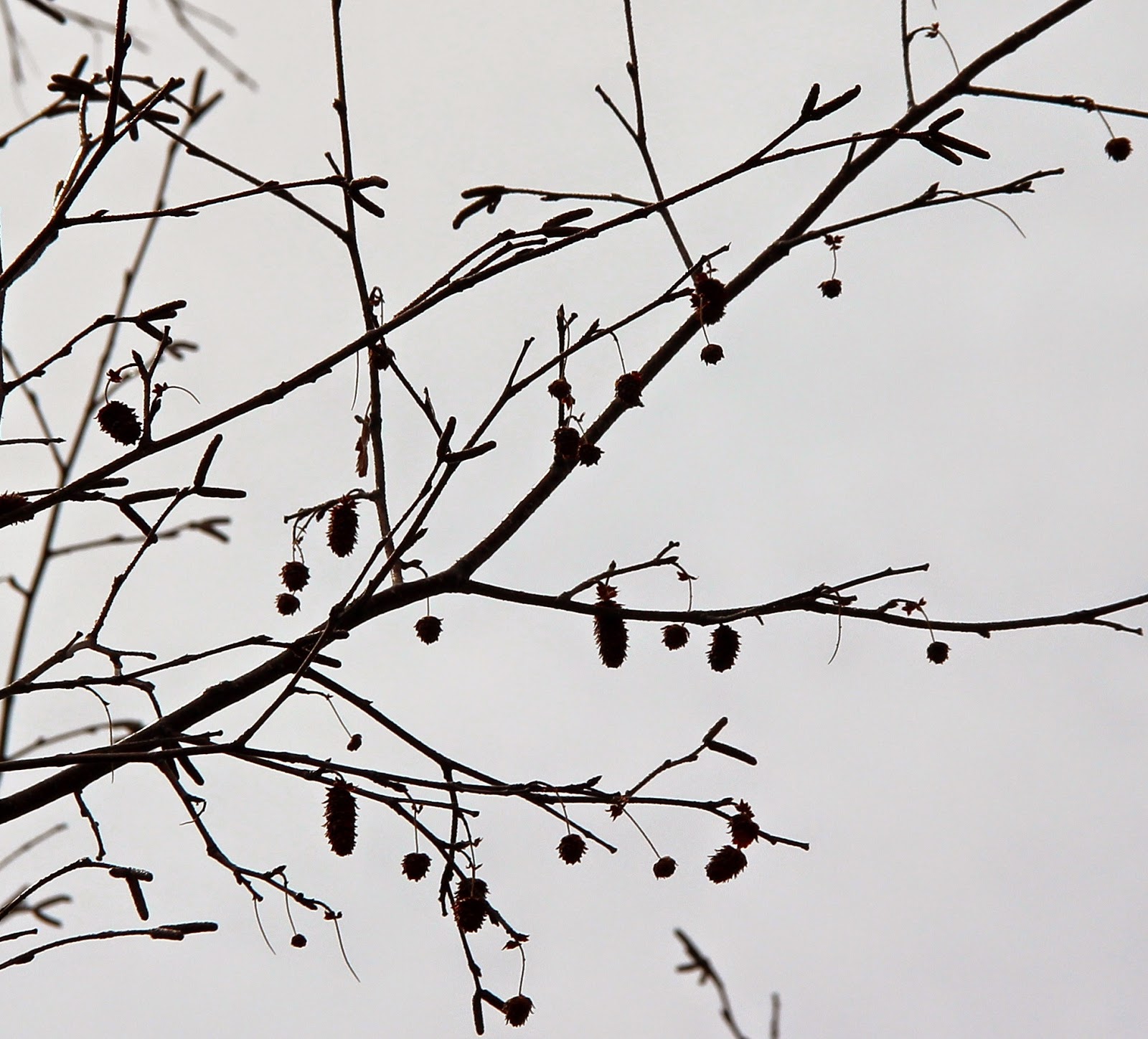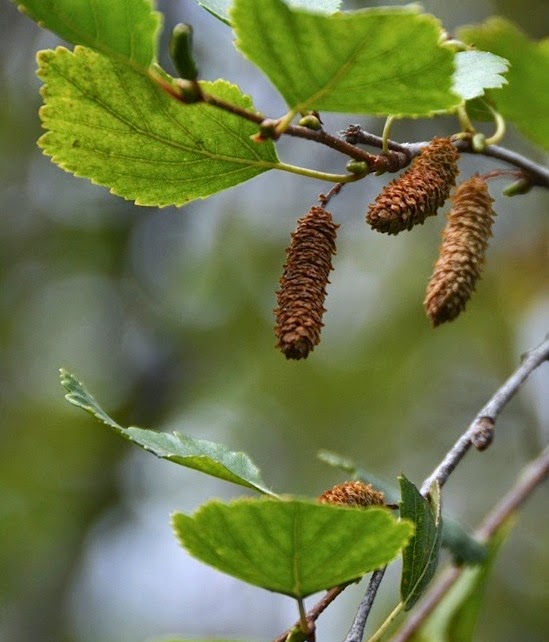It was a valid question. Alders and birches are both in the birch family (Betulaceae). You might say they’re cousins -- different genera, with alders in the genus Alnus and birches in Betula. They’re enough alike to be confusing, especially when they don’t have leaves. I was pretty sure one of these trees was an alder and the other a birch, and I was hoping there was an easy way to tell them apart this time of year. I looked into it when I got home and found it’s not as simple as I had hoped. But it’s not that hard either.
Both alders and birches are said to have smooth bark, but this is a little misleading. I think the authorities mean they don’t have furrowed bark. Many species of alder and birch have prominent lenticels -- prominent enough that the bark isn’t all that smooth.
 |
| Lenticels are pores allowing gas exchange through bark. This is Tree #2. |
Alders and birches both have separate male and female catkins (flower clusters), with the two sexes on the same tree (monoecious). Fortunately their female catkins differ, and therein lies a way to tell the cousins apart.
Tree #1 was dominated by male catkins ... the guys were in full bloom!
If you look close, you can see small reddish female catkins near the top of the male ones (click on image below).
Most useful to us were the old female catkins from last year, persisting as woody cones. They revealed the identity of Tree #1 -- it's an alder. [These aren’t true cones, found on conifers, but we’ll call them that anyway.]
 |
| Darker woody "cones" are last year's female catkins. |
Tree #2 had lots of catkins as well. The male ones were immature -- still hadn’t opened.
 |
| Young male catkins, roughly an inch long. |
High on the tree were scattered female catkins from last year. Their papery bracts gave them away. These are birch cones. They’ll soon fall apart and be gone.
 |
| Tree #2 is a birch, with pendulous papery-bracted female "cones" (click on image to view). |
In the field I used my Rocky Mountain Tree Finder to key out the two trees. They are the mountain or thin-leaved alder (Alnus incana var. tenuifolia), and the water birch (Betula occidentalis). Both are fairly common along streams in Wyoming.
 |
| Mountain alder (Tree #1); courtesy Zelimir Borzan, University Zagreb, Bugwood.org |
 |
| Mountain alder is sometimes called speckled alder, I suspect for the prominent lenticels. |
 |
| Water birch (Tree #2) in its prime, with mature female catkins. UFEI, Cal Poly San Luis Obispo |
 |
| The bark of water birch sometimes is a pretty red, contrasting nicely with the lenticels. |
--- ✿ ✿ ✿ ✿ ✿ ✿ ✿ ---
These trees became the first observations in the newly-launched iNaturalist project Plants of the Southern Laramie Mountains.





Really clear - and interesting.
ReplyDeleteI'm glad you thought it was clear ... it wasn't all that clear to me how to explain! thx
DeleteThere must be an easier way to tell these two trees apart than catkins
ReplyDeleteJames, I bet if I spent more time around these trees I wouldn't have to rely on catkins. But for now they're the most distinctive character for me ... and easiest to remember. thanks for visiting!
DeleteYeah, but that's not enough
DeleteThank you! That helped me. I couldn't tell if I had a birch or an alder. Very helpful info
DeleteHello Anon, glad to hear it was helpful. Btw, I know the feeling!
DeleteThanks for sharing!
ReplyDeleteHello Anon—you are most welcome! thanks for visiting.
DeleteWonderful photos! Your explanations that follow a discovery process helped me learn as you did. I was originally hazy on the two, but know this will stick with me. Thank you for taking the time.
ReplyDeleteYou are most welcome, Anon! Thanks for the encouraging feedback :)
Delete